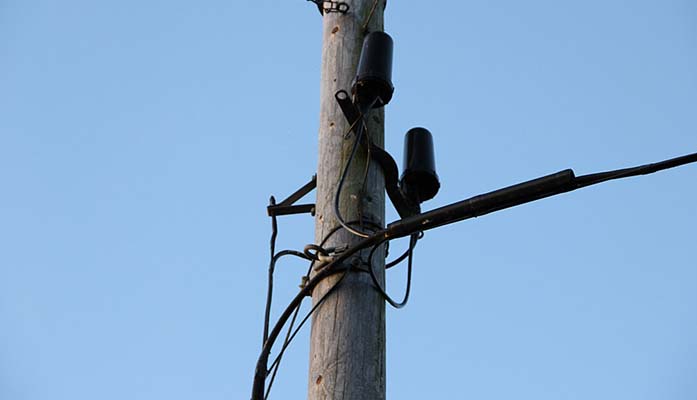
The Corporation Commission recently unanimously voted to support Tucson Electric Power’s (“TEP”) Midtown Reliability Project (“Midtown”). The Midtown project is a much needed improvement for the City of Tucson’s antiquated and overloaded 46kV sub-transmission system. The equipment will be upgraded to a 138kV system in the area adjacent to the University of Arizona and Banner University Medical Center. The project would also replace a portion of the 4kV distribution lines located in the Midtown neighborhoods. These systems are over 50 years old and no longer meet the needs and demands of the area as the infrastructure has become increasingly overstrained and unstable.
Fragile wooden poles that are susceptible to damage will be replaced with larger capacity metal poles and more powerful transmission lines. Up to eight 46kV existing substations and 19 miles of current 46kV line will be removed, resulting in a reduced number of substations and overhead power lines in Midtown Tucson. The upgrades will benefit all of TEP’s customers; the transmission lines will improve system redundancy and grid resiliency, allowing power to bypass lines and areas that might be down or overloaded. In supporting the proposal, the Commission rejected calls by the City of Tucson leadership and neighborhood groups who demanded the new lines be “undergrounded” as opposed to the standard more cost efficient above ground installation.
Tucson voters overwhelmingly rejected Prop 412 in March 2023, which was supported by Tucson’s Mayor and TEP. The proposition would have extended TEP’s franchise agreement with the city, and in return would have established additional fees to fund the undergrounding of the Midtown project and establish a “Climate Action Fund.” The defeat left the franchise agreement renewal in limbo, but it also forced TEP to move forward with an alternative plan to complete the needed and already delayed improvement. City leaders continued to call for the undergrounding of equipment, a beautification effort where costs would have been picked up by all TEP ratepayers, not just the customers who will benefit from the Midtown project improvements.
During the Commission proceedings, some claimed the incremental cost difference between underground and above ground lines was negligible, and that the historic nature of the area and neighborhoods called for a greater standard of beautification. There are two important responses to those viewpoints. First, the region already has above ground power lines. Any sort of undergrounding would be a luxury the area currently doesn’t enjoy. And as previously noted, the above ground upgrades will actually reduce the total number of transmission lines and substations. Second, there is a huge price difference. Project estimates for the cost difference between underground and above ground are $64 million dollars. An additional $64 million that would have to be funded by all TEP ratepayers, the far majority of whom live nowhere near Midtown.
Last year, the Commission adopted a transmission line policy statement that utilities under the Commission’s jurisdiction should avoid incurring higher costs from underground installation of transmission lines unless it was necessary for reliability or safety purposes. Undergrounding lines for purposes such as stakeholder or community preferences are not valid reasons on their own. And concerned third parties such as cities or neighborhood groups can still seek to cover the cost difference to underground through other means such as forming an improvement district.
With most rate design, there’s a degree of “subsidization” that exists, wherein equipment upgrades or power line installations are spread out across an entire ratepayer base for that utility’s customers. However, when a project or proposal clearly only benefits a small subset of customers, it is our duty as a Commission to look out for all ratepayers. We must ensure the desires of a few do not adversely impact the pocketbooks of the many.
It’s not uncommon for the Commission to review proposals that subscribe to what some refer to as “luxury beliefs.” Ideas and opinions that benefit a group of people who are better off while often inflicting greater costs or more harm on less fortunate customers. We see this most frequently amongst climatism promoters, who advocate to end the use of hydrocarbons and rapidly transform our electric grid, with no concerns for the price tag to ratepayers. It’s akin to advocating for ratepayers to subsidize electric vehicle charging stations that benefit a small set of utility customers, while the far majority of other customers either do not want an electric vehicle or can’t afford one.
During the hearing, proponents of line undergrounding attempted to rationalize the cost increase due to the unique history and beauty of the area. They argued the monthly cost to underground the Midtown project is negligible when spread out across the entire customer base. While I am sympathetic to the preferences of property owners, how can I as an elected official possibly rationalize to ratepayers in South Tucson that their neighborhood isn’t worthy of receiving the same special treatment?
With this vote, the Commission honored the will of Tucson voters and protected the pocketbooks of TEP ratepayers. We also took big steps to improve the long term reliability and durability for all TEP customers in the Tucson area.
Kevin Thompson was elected as a member of the Arizona Corporation Commission in 2022. He previously served as a member of the Mesa City Council for eight years, representing the fastest-growing area of the city.

